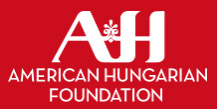William Penn Life, 2018 (53. évfolyam, 1-12. szám)
2018-10-01 / 10. szám
Tibor's Take with Tibor Check, Jr. Journey’s End Remembering the Hungarian refugee crisis of 1956 A RED SUN HANGS LOW IN THE SKY, though clouds begin to gather overhead, threatening rain. A look over your left shoulder confirms that the column of bedraggled people is still shuffling several meters behind. You shout at them, and while they try to catch up, the pace of your little group remains slow. This is bad. There is only a little daylight left, and the hardest part of the journey lies ahead. There have been reports of massacres at the border, where guards spray machine gun fire into tottering groups of people just yards away from freedom. The final few yards-across flat marshland and over a river-will require speed and endurance. Your group does not seem to have either. As the last rays of daylight escape from just above the horizon, you see the border crossing in the distance. Your heart sinks as you realize that the little footbridge across the river has fallen into disrepair. This treacherous terrain has become even more dangerous. You sprint through the marshland, tall grasses whipping you in the face as you run past. You almost fall headlong down the riverbank, but you stop at the last second, your feet implanting in the cold mud. You creep down to the water's edge, and take a few steps into midriver. Thankfully, the rocks and sediment have created a sort of natural ford; for the adults, the water will only reach their thighs. You clamber back up the escarpment, digging into the dirt with your hands for balance. You beckon your group to follow you at a run. At some point, you realize that two silhouettes 70 meters away have been watching you from the top of a hillock. You can see their rifles and their hats. There's no time to stop, no place to find cover. Crying out will only confuse and demoralize your group, but you aren't really thinking that clearly. You are rooted to your spot, paralyzed with fear. But you don't hear the whizz of bullets overhead. The border guards' carbines remain slung on their backs. You see one wave to you. They turn around and resume their patrol. A small blessing, a bit of humanity shines through as the last bit of sun falls below the horizon. Fording the river takes time, and the temperatures are rapidly falling. The water soaks right through your clothes, chilling you to the bone. The children and elderly are the last to come across; you and a couple strong men practically drag them across the river. As you climb up the western bank, a couple of hands reach out to pull you up. They lead you to a van and thrust a cup of coffee into your hands. Your mind races, gathering up your family. You count them in your head as you have done before a hundred times —your spouse, your twin girls, Uncle Ferenc and Grandma. All of you have made it, by some miracle. A Red Cross volunteer comes to you with a clipboard and begins to take down information. He provides you a couple of pamphlets and offers you a ride on the next bus to the makeshift refugee camp on the edge of town. The volunteer smiles as he leaves and says: "Welcome to Austria." It's past midnight by now. The day is Nov. 16,1956, and it is the first day of your new life. What happens next? ****************************** In previous editions of Tibor's Take, I have written at length about various aspects of the 1956 Revolution. Some years, I've even used personal conversations, books, articles and other information to sketch out a sort of dramatized composite, as I have done here. For the most part though, my narratives find a sort of natural climax at the violent end of the uprising and the frantic escape from tyranny. The narratives usually wrap up with happy endings—resettlement in the West with long years of prosperity for those who fled Communist Hungary. What I miss, however, is the events that intervene between escape and "happily ever after. " What was it like for those Hungarians who escaped, who suddenly found themselves refugees in a foreign land? This year, I will begin to focus on this question. As always, I am using only a sampling of historical and archival resources. I know there is much more information and scholarship on this subject, and there is much more to be discussed. From the end of the uprising in November 1956 to when the Hungarian government sealed its borders some several weeks later, roughly 200,000 Hungarians fled their 6 0 October 2018 0 WILLIAM PENN LIFE
